10 Food Robotics Innovations Transforming the Food Industry: Uses &Examples
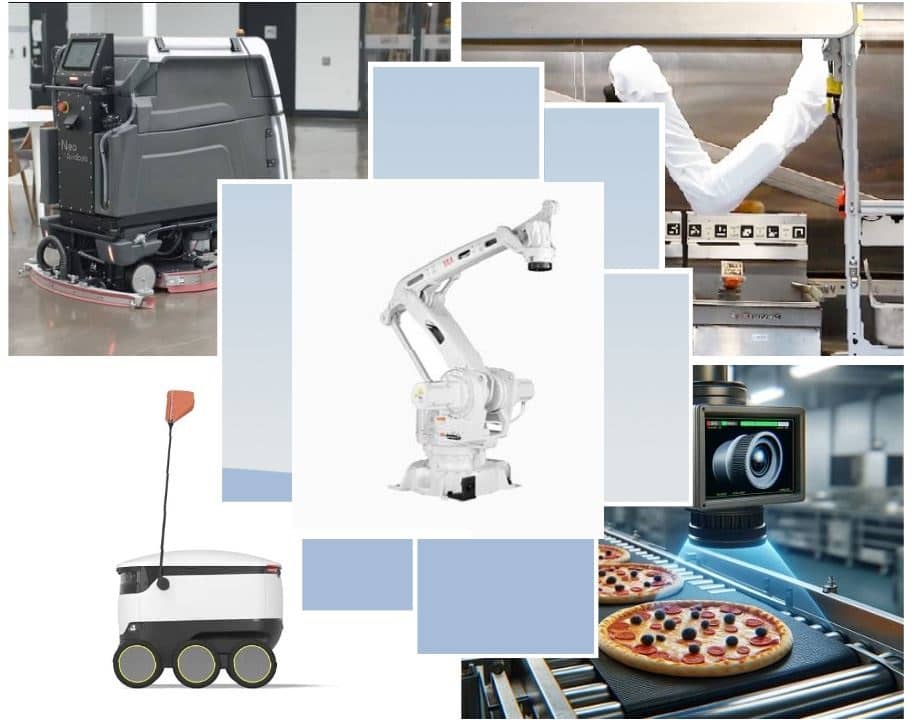
In a world where technology advances by leaps and bounds, the food industry is not falling behind in the race for innovation. Robotics, once a futuristic dream, is now a tangible reality revolutionizing every link in the food production chain. From planting to when the food reaches our tables, robots are playing key roles that were previously unthinkable.
This article will explore 10 robots that are making a difference in the food industry. From machines that cut and package with millimeter precision to those that cook or serve food with astonishing efficiency, each represents a vital link in the evolution towards a more advanced and automated food industry. Join us on this journey through the fascinating world of food robotics, where science fiction becomes the science of food.
The integration of robotic systems into the food industry is not only a testament to human ingenuity but also a response to the growing challenges we face: the need to produce food more efficiently and sustainably, the demand for unprecedented food quality and safety, and the desire for customization in an increasingly diversified market.
1. Packaging and Palletizing with Marel's Robot FlexiCut
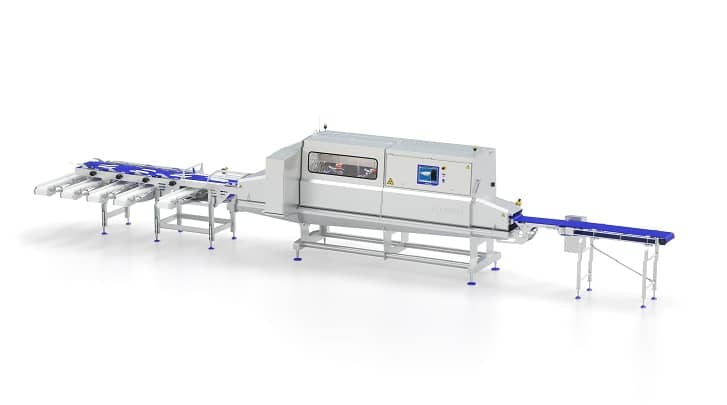
Marel's Robot FlexiCut revolutionizes the fish processing industry by automating bone removal and fillet portioning. Its X-ray and weighing technology ensures precise cuts and optimal product use, reducing waste. This precision and efficiency in cutting extend to packaging and palletizing, optimizing production processes and elevating food quality and safety standards. For more information, visit Marel's official FlexiCut page: [https://marel.com/en/products/flexicut/](https://marel.com/en/products/flexicut/).
2. Fast Palletizing with ABB's Robot IRB 460
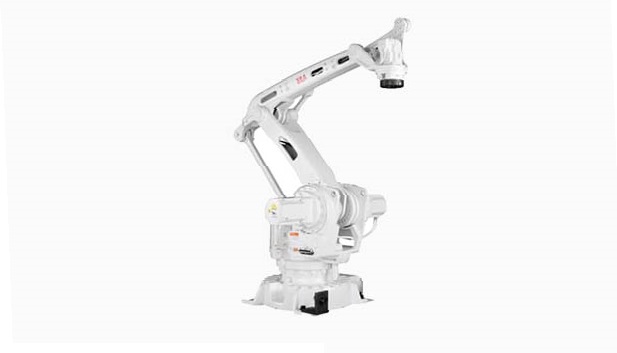
ABB's Robot IRB 460, known for its fast palletizing capability, is essential in the food industry, especially in production plants where efficiency and speed are critical. This robot stands out for its speed, enabling effective food packaging without sacrificing process quality. Its design allows companies to accelerate palletizing processes, essential for keeping the supply chain smooth and efficient, demonstrating how robotic solutions can significantly optimize production operations.
3. Automated Cooking with Miso Robotics' Flippy
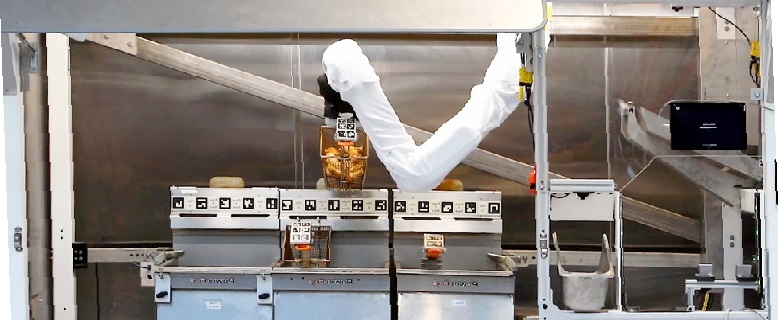
Flippy by Miso Robotics represents a revolution in automated cooking, specially designed for fast food kitchen environments. This advanced robot chef specializes in frying tasks, from french fries to chicken wings, noted for its ability to ensure consistency and exceptional quality in every dish. Flippy not only enhances kitchen efficiency by handling repetitive tasks with unmatched precision but also significantly contributes to kitchen safety. Automating the frying process, Flippy reduces the risk of accidents related to handling hot oil, creating a safer work environment for staff. The implementation of Flippy in fast food kitchens not only optimizes production times but also ensures that each customer receives a high-quality final product, demonstrating the potential of robotics to transform the food industry.
4. Beverage Service with Café X's Robot Barista
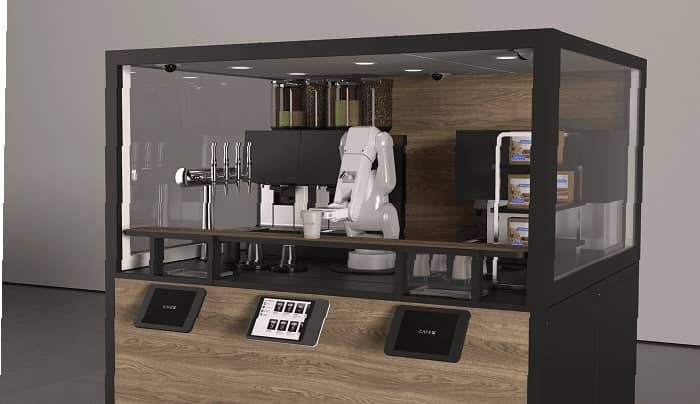
Café X's Robot Barista is a revolutionary innovation in beverage service, specially designed to automate coffee preparation. This robot not only speeds up the coffee serving process but also ensures consistent quality in every cup, offering a personalized experience for each customer. By integrating advanced technology, Café X significantly enhances efficiency in beverage service, meeting consumer demand for quick, reliable, and personalized options.
5. Sally by Chowbotics
This robot is an innovative food preparation system specializing in salads, cereal bowls, yogurts, and other cold dishes, allowing meal customization according to consumer preference. Sally uses fresh and pre-cut ingredients to prepare quick and healthy meals, demonstrating how robotics can contribute to healthy and personalized eating in various settings, from cafeterias to offices and hospitals.
6. Quality Inspection with Cognex's Insight Vision
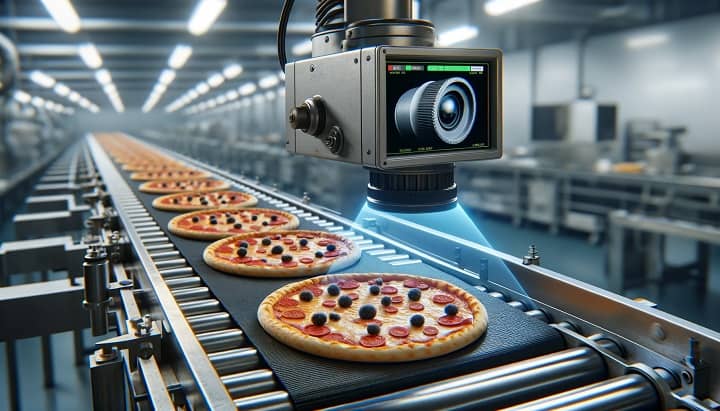
Cognex's Insight System uses artificial vision technology for quality inspections on food packaging, ensuring the integrity and safety of the final product. This advanced system precisely detects defects or irregularities, playing a crucial role in maintaining high quality and compliance standards in the food industry.
The implementation of this technology underscores the critical importance of robotics and automation in quality control, optimizing production processes and ensuring consumer satisfaction.
7. Cleaning and Disinfection in Food Factories with Avidbots' Neo
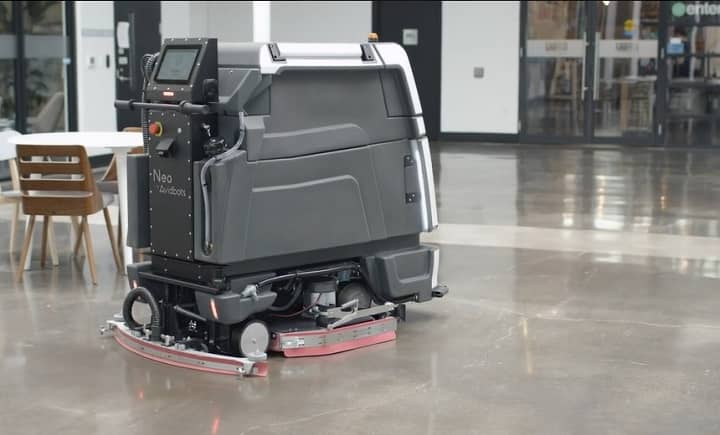
Neo by Avidbots is an autonomous cleaning robot transforming hygiene and safety practices in food factories. Designed to operate independently, Neo navigates through workspaces with precision, keeping floors impeccably clean and disinfected. Its advanced technology not only allows for effective cleaning but also disinfects large areas without constant supervision, ensuring a hygienic and safe food production environment.
The implementation of Neo in the food industry highlights how robotics can improve cleaning protocols, reduce the risk of cross-contamination, and contribute to a safer supply chain. Its official website is: https://avidbots.com/
8. Autonomous Delivery Robot by Starship Technologies
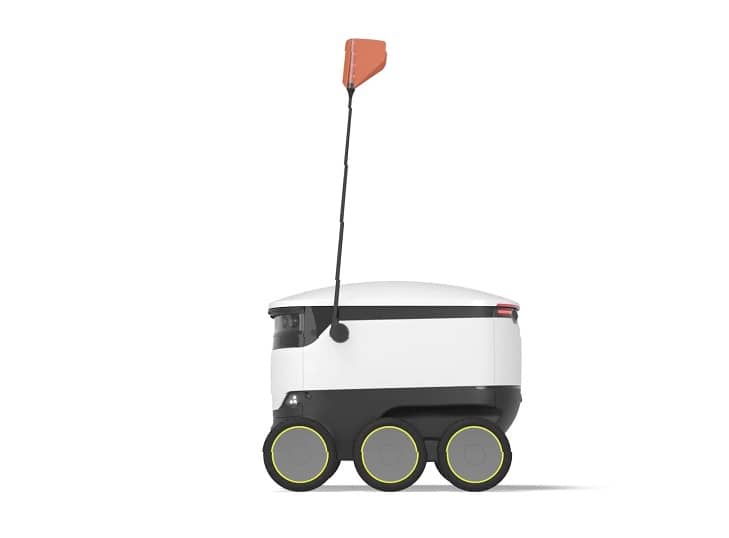
Starship Technologies' autonomous delivery robots are an ingenious solution to logistics and distribution challenges in the food industry. Designed to navigate sidewalks and urban settings, these robots facilitate food delivery directly to customers' doors, improving service efficiency and reducing waiting times. Capable of operating independently, Starship's robots herald a new era in home food delivery, combining advanced technology with consumer convenience. Here's their official website: https://www.starship.xyz/
9. Customized Food with 3D Systems' ChefJet Pro Robot
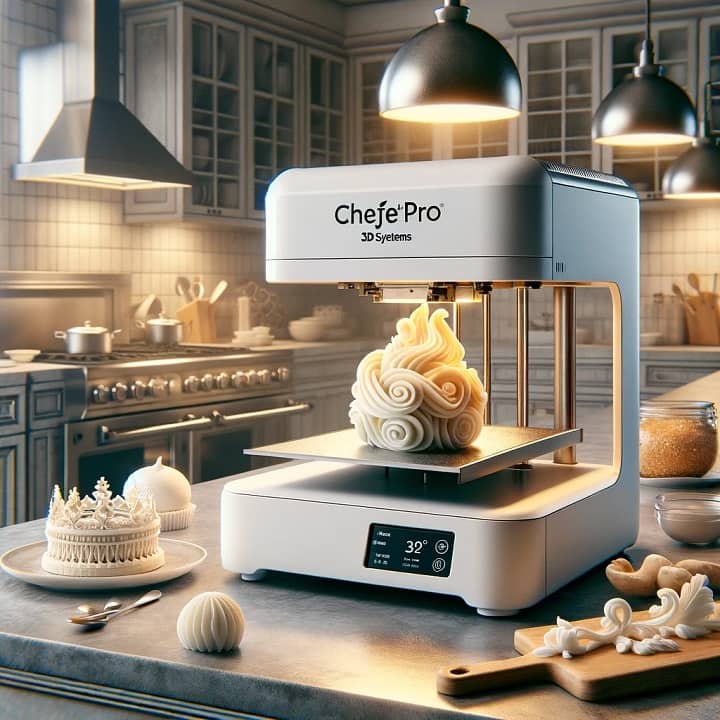
The ChefJet Pro emerges as a culinary ally, expanding horizons in dessert creation. This 3D food printer invites us to a world where cake decorations and sweets know no bounds in customization. Its magic lies in its ability to bring to life designs we could only imagine before. Each creation is a testament to how technology in the kitchen is personalizing gastronomy, giving each bite a unique touch.
10. Smart Waste Management with Winnow Food Waste
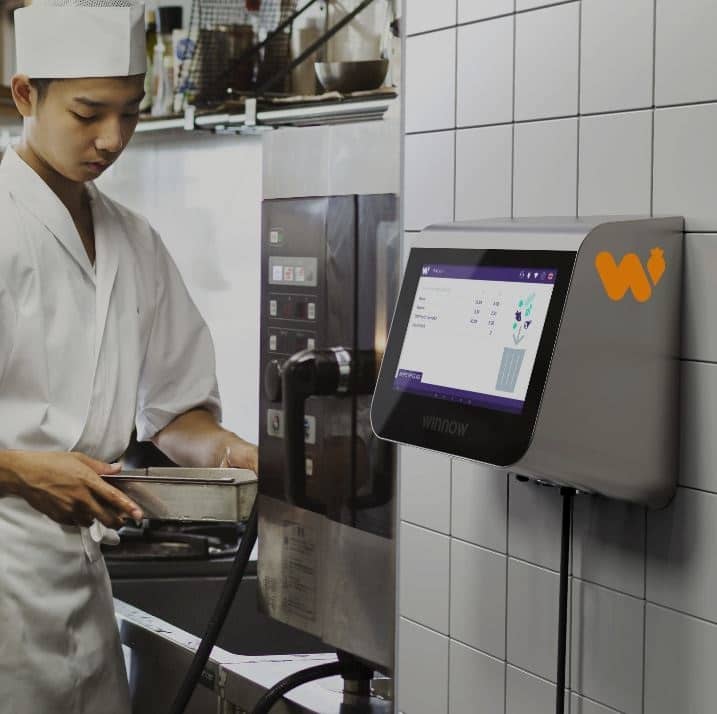
Winnow Vision transforms how commercial kitchens address food waste. Through artificial intelligence, this innovative system detects and analyzes discarded food, providing detailed insights to optimize resource use. Its implementation highlights the positive impact of new technologies on driving more sustainable practices in the food industry, enabling businesses to act more informedly to reduce waste.
Here's their official website for more information: https://www.winnowsolutions.com/
Benefits of Using Robots in the Food Industry
Robotization in the food industry has revolutionized production processes, improving efficiency and the quality of the final product. Below, we explore the key benefits and practical examples of its application.
- Production optimization: Robots, with their precision and ability to work 24/7 without rest, significantly increase production. For example, ABB Robotics has implemented automation systems in food factories that have increased production by 25%.
- Improvement in food safety: Automated handling reduces the risk of cross-contamination, crucial in the food industry. Fanuc offers robots that handle food ensuring maximum hygiene standards.
- Labour cost reduction: Although the initial investment in robotics can be high, the long-term savings in labour costs are significant. KUKA Robotics has helped food companies reduce their operating costs by 30%.
- Flexibility in production: Robotic systems can be reprogrammed to adapt to different tasks, allowing for quick adaptation to demand changes. Universal Robots has enabled small and medium-sized businesses to integrate flexible robots into their production lines.
- Improvement in working conditions: By taking on repetitive and physically demanding tasks, robots free workers from heavy workloads, improving the work environment. Yaskawa Motoman has implemented robots that assume dangerous tasks, improving employee safety.
Conclusion on the Future of the Food Industry with Robotics
In conclusion, robotization in the food industry is not just a trend, but a necessary evolution to face current market challenges. The adaptability, efficiency, and safety offered by robots represent indispensable competitive advantages for any sector company.

Robotization in the food industry translates into efficiency, precision, and safety, fundamental to meet current demand.
The incorporation of robots into the food industry has revolutionized production processes, offering a range of benefits from improved task precision to an increase in food safety. These automated machines are capable of performing repetitive tasks with millimeter precision, thus reducing the margin of error and material waste. For example, in the packaging process, robots ensure that each product is handled and packaged with the same quality standard, eliminating variations that could arise from human intervention.
Additionally, the speed at which these robotic systems operate allows food companies to increase their production capacity without sacrificing quality. This is particularly relevant in times of high demand, where the ability to respond quickly can mean the difference between meeting or not meeting market needs. Companies like Nestlé, PepsiCo, and Tyson Foods have integrated robots at various stages of their production, from ingredient handling to final packaging, demonstrating the versatility and positive impact of this technology.
Food safety is another fundamental pillar reinforced by the use of robots. By minimizing human contact with food, the risk of cross-contamination is significantly reduced, ensuring greater hygiene throughout the production process. Examples of this can be seen in companies like Kraft Heinz and Mondelez International, where robots not only increase efficiency but also play a crucial role in maintaining high standards of food safety.
View also:

Leave a Reply